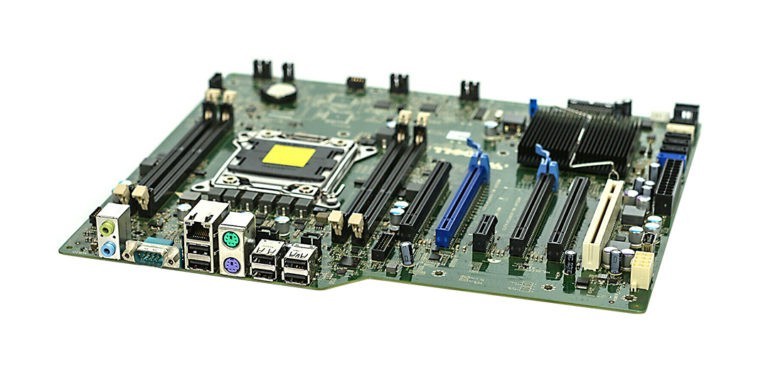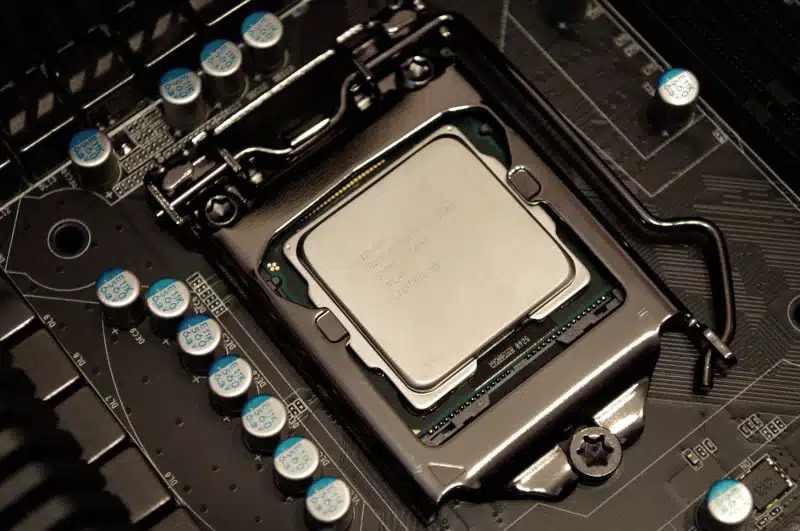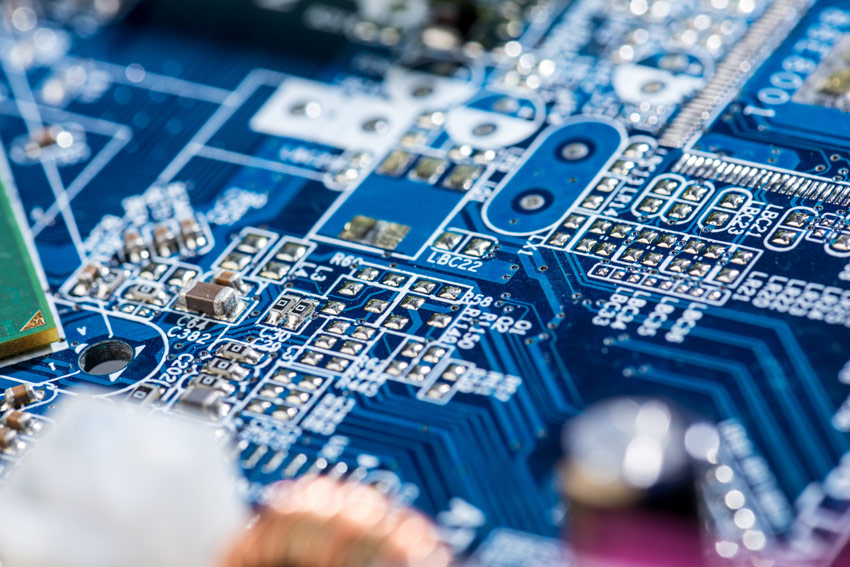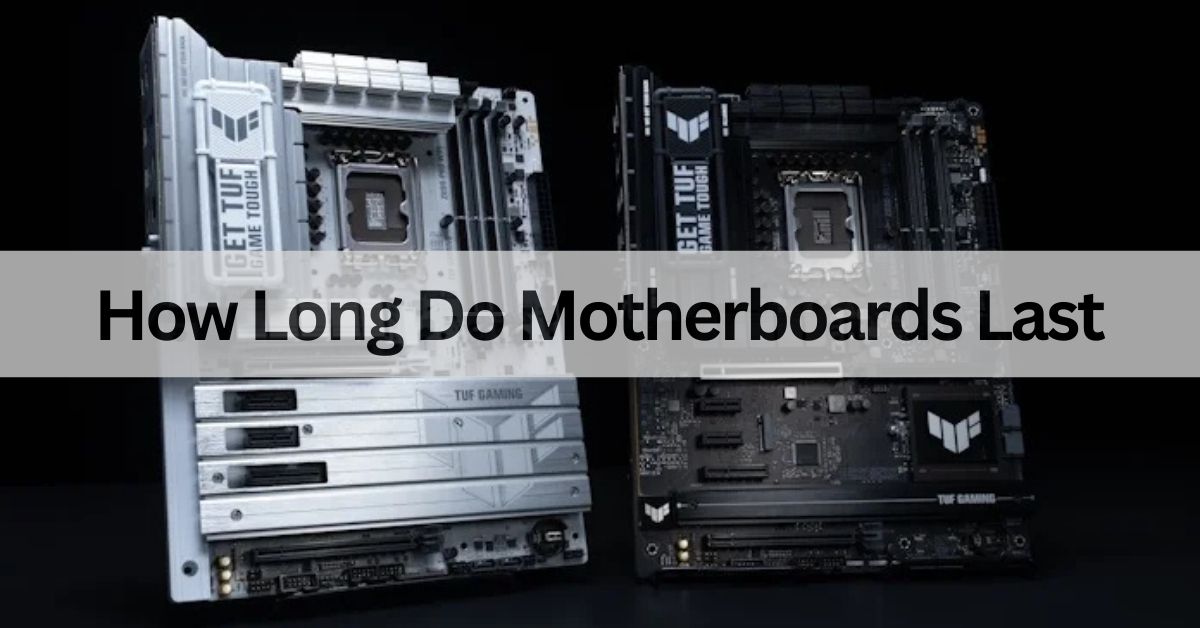I’ve used my motherboard for several years without significant issues, and it’s still going strong. Based on my experience, motherboards can last anywhere from 5 to 10 years with regular care and updates.
Motherboards are often used every day and last between 5 and 10 years. Proper cleaning, keeping them cool, and using quality power sources can help them work well for many years without problems.
In this article, we will discuss “How Long Do Motherboards Last “.
Table of Contents
What Is a Motherboard?

A motherboard is the central part of a computer that connects all the other parts. It allows the processor, storage, memory, and other components to communicate, making the computer work. Without a motherboard, the computer wouldn’t be able to run.
Read More: Ram Light On Motherboard – Easy Steps To Follow!
Factors Affecting Motherboard Lifespan:
1. Quality of Components Used
- Materials: High-quality motherboards use durable materials that resist wear, while cheaper options may use materials that wear out faster.
- Capacitors and Resistors: Quality capacitors and resistors prevent overheating and short circuits, helping the motherboard last longer.
- Build Quality: Boards from reputable manufacturers often undergo strict quality control, ensuring durability.
2. Environmental Factors
- Temperature: Extreme temperatures, especially overheating, can damage components over time, leading to a shorter lifespan.
- Humidity: High humidity levels can cause corrosion on the motherboard, while arid environments increase static risks.
- Dust and Debris: Dust buildup can clog fans and cause overheating, stressing the motherboard components.
3. Usage Patterns
- Intensive Use: Heavy tasks like gaming, rendering, and prolonged high CPU usage generate heat, reducing motherboard longevity.
- Frequent Boot Cycles: Constant turning on and off can stress motherboard components over time.
- Extended Idle Periods: Long periods of inactivity without proper shutdown may affect motherboard efficiency.
4. Power Supply Quality and Stability
- Stable Power Supply: A reliable power supply prevents voltage fluctuations that could harm the motherboard.
- Voltage Spikes: Power surges and spikes, often due to unstable electricity, can cause severe motherboard damage.
- UPS (Uninterruptible Power Supply): Using a UPS can shield the motherboard from unexpected power cuts.
5. Maintenance and Cleaning
- Regular Dusting: Periodically cleaning dust off the motherboard and fans helps maintain optimal temperatures.
- Thermal Paste Reapplication: Changing thermal paste every few years helps keep temperatures low for motherboards with heatsinks.
- Proper Ventilation: Ensuring the computer case has good airflow and cooling systems prevents overheating.
6. Overclocking and High-Performance Demands
- Overclocking: Pushing the motherboard beyond its default settings increases the temperature, potentially decreasing lifespan.
- Cooling System Efficiency: Efficient cooling systems help manage higher temperatures associated with overclocking.
- Performance Stress: Running demanding applications or overclocking often can stress components, leading to wear faster.
7. BIOS and Firmware Updates
- Updated Firmware: Regular updates can improve efficiency and compatibility, helping to maintain motherboard performance.
- Avoiding Frequent Reflashing: Excessive flashing of the BIOS or firmware can sometimes destabilise the motherboard.
- Secure Updates: Ensuring firmware updates are from reliable sources protects against malware damaging the motherboard.
8. Age and Technological Advancements
- Component Aging: With time, specific components may naturally degrade or become outdated, affecting the motherboard’s overall function.
- Compatibility with New Parts: Newer components may only sometimes work well with older motherboards, leading to a gradual decrease in performance.
- End of Manufacturer Support: Older motherboards may no longer receive updates, increasing vulnerability to security issues.
9. Installation and Handling Practices
- Proper Installation: Secure installation prevents loose connections or physical damage that may affect longevity.
- Static Protection: Handling the motherboard without an anti-static wrist strap can introduce static charges, potentially damaging sensitive parts.
- Avoiding Physical Damage: Being cautious during installation helps prevent accidental bumps or scratches, which can harm the motherboard.
10. External Factors and Physical Environment
- Location of Computer: Placing the computer in a cool, well-ventilated area reduces heat accumulation.
- Electrical Surges: Using surge protectors prevents sudden electrical spikes from damaging the motherboard.
- Protection Against Spills: Keeping liquids away from the computer avoids accidental spills that could short-circuit the motherboard.
Signs Your Motherboard Might Be Failing:

Signs of a failing motherboard include frequent crashes, slow performance, unusual noises, and random shutdowns. You may also notice that specific hardware, like USB ports, is no longer working. If these issues appear, it might be time to consider replacing your motherboard.
Read More: Can I Use 1866mhz Ram On 1600 Motherboard – What You Need To Know!
How to Extend the Lifespan of Your Motherboard?
To help your motherboard last longer, keep it clean and dust-free. Ensure good airflow and cooling, avoid exposure to high temperatures, and use a surge protector to prevent damage from power surges. Regular care can keep it running smoothly for years.
When to Consider Replacing Your Motherboard?
Consider replacing your motherboard if you notice frequent problems, slow performance, or are no longer compatible with newer parts. Upgrading can improve your system’s speed and stability, mainly if the current motherboard has been used for several years.
What is the lifespan of a gaming motherboard?
A gaming motherboard lasts 5 to 10 years with regular use and proper care. Keeping it dust-free, ensuring good airflow, and avoiding extreme temperatures can help it last longer. Regular updates may also help it keep up with new technology over time.
Signs and Symptoms: Is your motherboard dying?
If your motherboard fails, you might notice the computer not turning on, frequent crashes, or strange error messages. The screen may stay black, or there could be random restarts. Loose or damaged connections can also be signs that the motherboard is dying.
Science Behind Motherboards LifeSpan?
A motherboard’s lifespan depends on factors like build quality, temperature, and use. High temperatures, dust, and poor ventilation can shorten its life. Regular care, such as cleaning and ensuring proper airflow, helps keep a motherboard working well for many years.
Do Motherboards Have A Shelf Life?
Motherboards don’t have a specific shelf life, but their performance can decrease over time due to wear and tear. Factors like heat, dust, and outdated components can shorten their lifespan. With proper care, a motherboard can last many years before needing replacement.
Common Myths and Misconceptions about Motherboards?
1. Motherboards Don’t Need to Be Upgraded as Often
- Many people believe motherboards don’t need frequent upgrades, but this isn’t true. As technology advances, older motherboards may not support new components, such as faster RAM or modern CPUs. If you’re planning to upgrade other parts of your system, your motherboard may also need an upgrade to maintain compatibility.
2. More Expensive Motherboards Are Always Better
- A common misconception is that the more expensive a motherboard, the better its performance. While higher-end motherboards may offer more features, such as additional ports or advanced cooling options, the actual performance difference in regular usage or gaming may be insignificant compared to a mid-range board.
3. All Motherboards Are the Same Size
- Not all motherboards are the same size. They come in different form factors, such as ATX, microATX, and miniITX, and the size impacts the number of components you can install. Choosing a motherboard that fits your case and meets your needs regarding expansion slots and ports is essential.
4. Overclocking Will Always Improve Performance
- While overclocking can boost the performance of a system, there are better choices for everyone. Overclocking can generate extra heat, potentially reducing your motherboard’s lifespan and other components. It can also lead to system instability if not done correctly.
5. All Motherboards Support Every CPU
- Not all motherboards support every CPU. Motherboards have specific socket types; not all are compatible with every processor. For example, an Intel processor requires a motherboard with an LGA socket, while AMD processors use an AM socket. Always check compatibility before purchasing.
How to Extend the Life of Your Motherboard?
To extend your motherboard’s life, keep it clean and dust-free. Ensure proper airflow in your PC case and avoid overheating. Regularly update drivers and BIOS. Also, it can be protected from power surges with a surge protector to prevent damage.
Guide to replacing your computer’s motherboard?

Replacing your computer’s motherboard requires careful steps. First, turn off the PC and unplug everything. Remove the old motherboard, carefully disconnect the cables, and place the new one. Reconnect the components, secure the screws, and power on your computer to check if it works correctly.
Read More: What Is Orange Motherboard Light – Quick Troubleshooting Guide!
Is it worth replacing the motherboard?
If your current motherboard is damaged, outdated, or limiting your system’s performance, replacing it is worth it. It can improve stability, support newer components, and boost system speed. However, if your motherboard is still working well, replacing it might not be necessary.
FAQs:
1. How do I know if my motherboard needs replacing?
If your system crashes often, fail to start, or can’t support newer components, it might be time for a replacement. Physical damage or outdated technology could also indicate the need for a new motherboard.
2. Can a motherboard last 10 years?
Yes, a motherboard can last up to 10 years with proper care. Regular cleaning and avoiding overheating can help extend its lifespan.
3. What happens if you don’t replace a faulty motherboard?
If you don’t replace a faulty motherboard, your system may become unstable, crash frequently, or stop working. It can also cause problems with other parts of the computer.
4. Is upgrading my motherboard worth the cost?
Upgrading your motherboard can improve system performance, support newer components, and enhance reliability. However, if your current motherboard works fine, the cost may not be justified.
5. How can I extend my motherboard’s lifespan?
Keep your motherboard clean and dust-free, ensure good airflow, and avoid overheating. Regularly update drivers to maintain performance and prevent issues.
6. What signs show my motherboard is failing?
Signs of motherboard failure include random shutdowns, system freezes, error messages, and hardware not being recognised. If these issues persist, consider replacing the motherboard.
Conclusion:
Replacing your motherboard is a good option if it’s outdated or causing issues. If it’s still functioning well, regular maintenance can extend its life. Consider the cost and benefits before deciding whether to upgrade.

Yesterday, while I was at work, my cousin stole my iPad and tested to see if it can survive a 25 foot drop, just so she can be a youtube sensation. My apple ipad is now destroyed and she has 83 views. I know this is entirely off topic but I had to share it with someone!